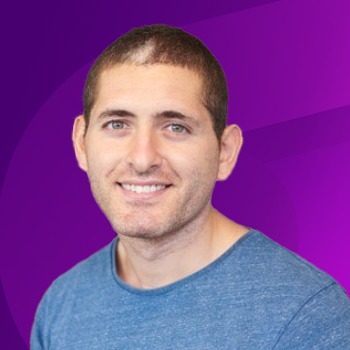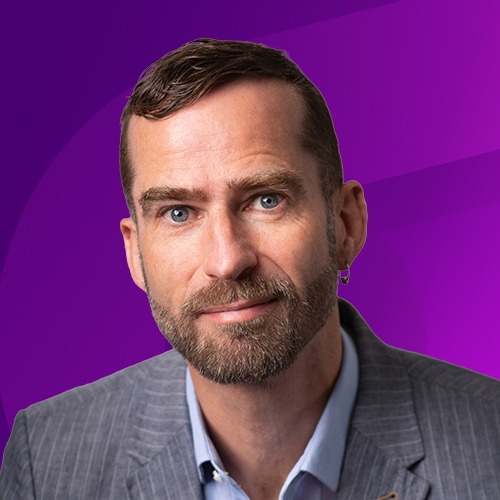Tune into an engaging fireside chat with iluminr cofounder Marcus Vaughan and James Hardy, iluminr Strategic Advisor.
This conversation centers on the pressing challenges and dynamic approaches in building operational resilience, as well as James’ motivation on joining the iluminr team. Drawing from James’ vast knowledge and experience in risk and resilience, James shares his perspectives on the crucial role of ‘muscle memory’, capability building and ensuring a coordinated response among teams and individuals in fostering organizational resilience across their enterprise.
Below, you’ll find the complete transcript of the chat for your convenience.
James Hardy on the Forefront of Building Resilience
Marcus: James Hardy, great to be with you today. Very excited to announce that you’ve joined iluminr as a strategic advisor to the organization. You’re obviously very close to what iluminr is doing. So I’m interested in getting an understanding of what you consider the greatest challenge to be at the moment for organizations trying to build organizational resilience across their enterprise.
James: It’s great to be with you, Marcus, and it’s great to be part of iluminr and what you’re doing. In terms of building organization and operational resilience, I think one of the most important things that excite me is exercising the muscle memory of individual people and groups of people in a coordinated fashion, to respond to something or anything that’s thrown at the firm or part of the firm.
And unfortunately, in this world we live in, it’s increasingly likely. We see what’s happening around the world, from cyber attacks to geopolitical events. Often I think firms don’t understand how to exactly respond or how they would respond. And the truth is, you never know how you’re going to respond to a specific event that happens because no one can predict exactly what will happen. But ensuring that the firm – as a collective and individuals within the firm can and are able almost as part of the muscle of how we operate and know how to respond.
While every aspect of operational (or organizational) resilience can be well documented, we can have all our plans checked and tested to some extent, but you never know how firms are really going to respond in the moment.
What I love about what you guys are doing, and excited to be part of, is your simulation approach. It’s not a simulation approach that takes a whole day, which you can’t do very often as part of a large organization. But rather your microsimulations, as the name infers, is a short, sharp, quick way to build that muscle memory. While it’s not the only thing that’s important in operational resilience, I think it’s one of the – if not, highest priority, to truly making a firm more resilient. It’s how that firm is going to respond to whatever is thrown at them.
Operationally speaking, it could be anything from a cyber-attack or a change in your market condition. It could be your competitors entering your market. So understanding how individuals respond in silo or as part of a collective is going to be incredibly important.
Blending Passion, People, and Execution
Marcus: Drawing upon your many years working in some of the largest financial institutions on earth. Why did you join iluminr as a strategic advisor?
James: That’s a good question. I joined iluminr because of three things. Your focus on testing, simulations and learning is incredibly important. I believe in it passionately. It takes more than just an idea. It takes an execution. It takes people behind the execution to also make it attractive. And for me, the people are great to work with, fun to be with, and eager and very passionate about what they do. If you’ve got a good idea and you’ve got great people, you can execute well. And if you believe that need is there, which I fundamentally do, it sounds like a very good winning combination to me. And I’d like to be part of a winning combination. But it’s a two way street. I’m learning from what you guys are doing, and hopefully you’re learning from some of my experience in the past.
Beyond Regulations to Intent and Practice in building organizational resilience
Marcus: I think you’ve been very modest. Having worked with you so far, you’ve brought an enormous amount of experience and insight into our journey and mission. I’m interested James, what advice would you give practitioners and professionals working in the industry who are really trying to take their organization to that next step in building organisation or operational resilience?
James: While my background and focus is in financial services, I think you could extrapolate a lot of insight from that market. My advice is not to get too hung up on the words of a regulation. Regulations are important, absolutely, and I’ve been involved in both influencing them and also responding to them. But I think it’s the intent behind them that’s most important. If you look at operational resilience, and the litany of regulations out there globally, they have a very common theme. But most importantly, they have a very common intent. And whenever I’ve spoken to regulators about that intent, they agree. The point is, you have to turn an intent into words and put those on paper, and give people guidance to supervise financial service firms.
But at the end of the day, it’s the intent. So my advice is: understand all the elements that could most importantly impact you. These are the things that could impact the things that a firm needs, to deliver its services. And let’s face it, if a firm is severely impacted because of some catastrophic event, it’s understandable that the firm isn’t necessarily going to operate in the perfect manner they operated before.
In other words, delivering some ability to serve as a client, or the market is a whole lot better than not being able to do anything. And so the message behind that is:
Don’t seek perfection. If you think you’ve got perfection, the reality is that the next event that hits you, will hit you from left field, so to speak. Understand the overall intent of these regulations, and then understand the operations of the firm and the people, to be able to respond accordingly. And that goes back to practice, practice, practice.
You may think you understand everything about a firm, but you still need to practice – not just the things you’d like to practice every day that you’re good at, but the things that really stretch the participants mind. Lastly, I’d say and this is a topic I believe very much in and that it takes a variety of people at all levels of the organization to be able to come together in a moment’s notice, and and almost intuitively understand one another and know the response protocols. Understanding who you’re working with to respond and getting to know those individuals and how they think and adjusting accordingly. I think it’s a softer, but important side of building resilience for a firm.
Critical Role of Capability in Balancing Planning and Response
Marcus: In all the things a professional can do or does in an organisation and building resilience – driving policy, undertaking planning, and capability. What level of importance do you put on capability in building resilience across an organisation out of all of the things practitioner must do?
James: I think that capability, and more importantly, proving an exercise with that capability is fundamental. In fact, I would say one of those without the other is futile. You can have capability, But if you don’t know how to invoke it at the right time, the right place, then what’s the point? On the flipside, if you believe you know how to invoke something, but it doesn’t exist in a severe but plausible scenario, then again, it’s futile.
So understanding and building upon those capabilities is important, and then supplementing that with a continuous variety of simulation or testing in a variety of forms, brings that capability to life. I’ve seen that you might think you’ve got capability, but if you tweak the simulation, event or test, you may find out there are some holes in that capability. And that goes to what we spoke about before – a lot of testing is ideal.
And I would say, tests that take a long time to plan and execute is somewhat impractical, right? If you’ve got so many people that need to be part of it. But bringing together the people that need to be brought together, and simulating something that really brings an emotive response quickly, within a short period of time, is more realistic. And so shortening the testing cycles, but doing them more frequently with greater variety is what I believe, could build better response capabilities and as a result, a better and more resilient firm.
Elevate your organization’s response capabilities with iluminr Microsimulations. Book a discovery call today.














